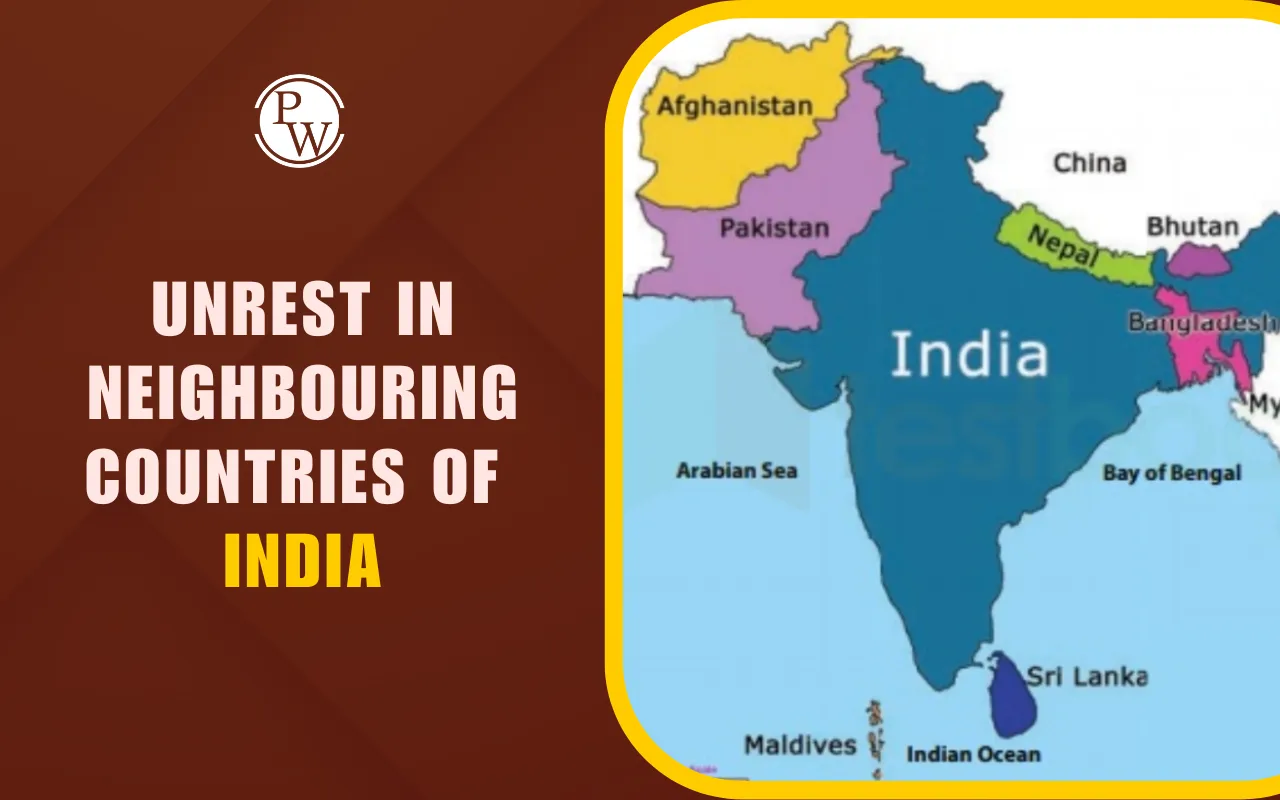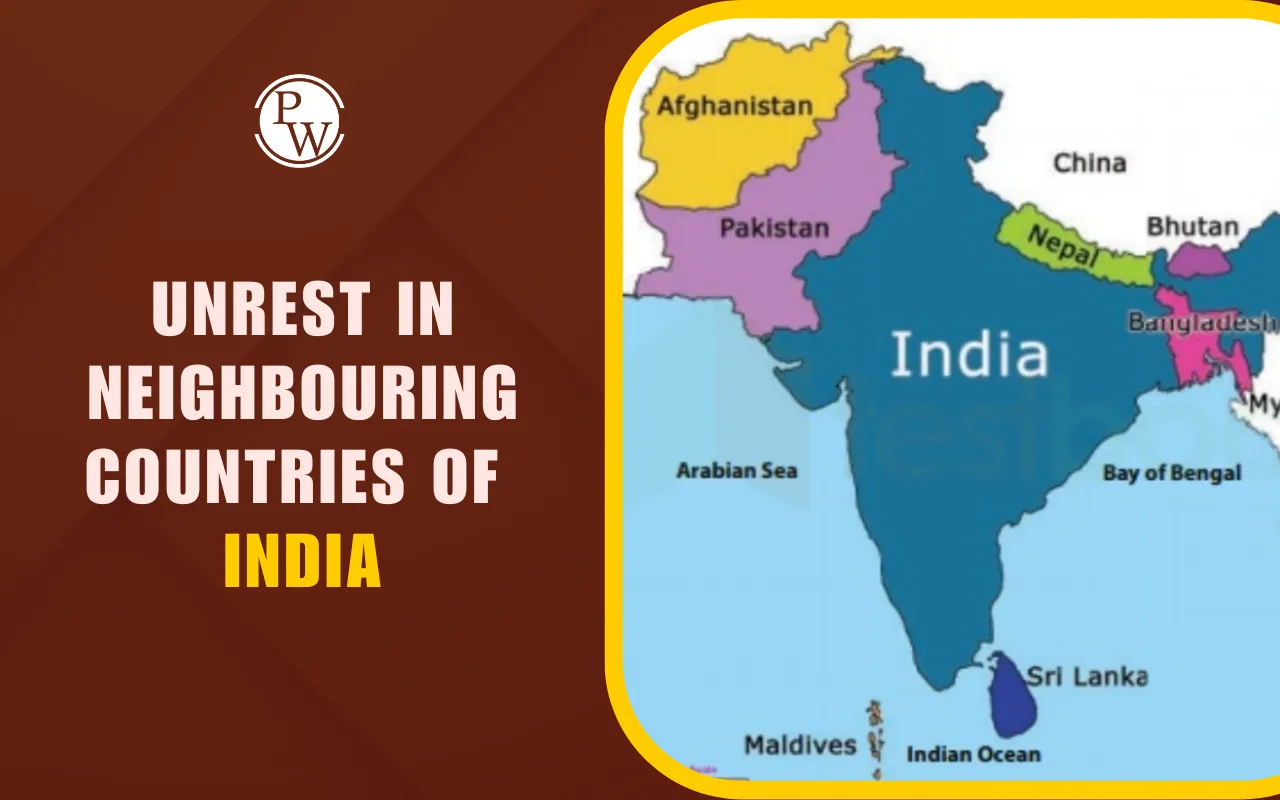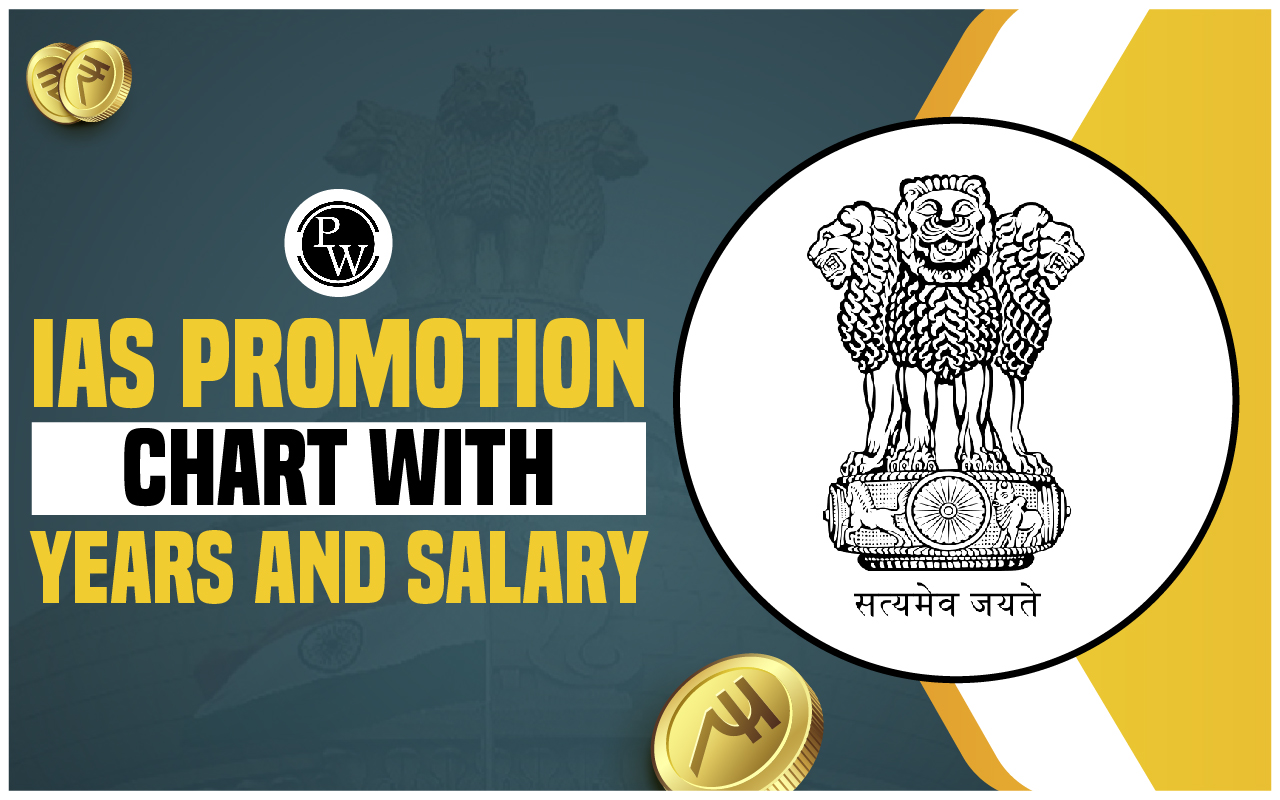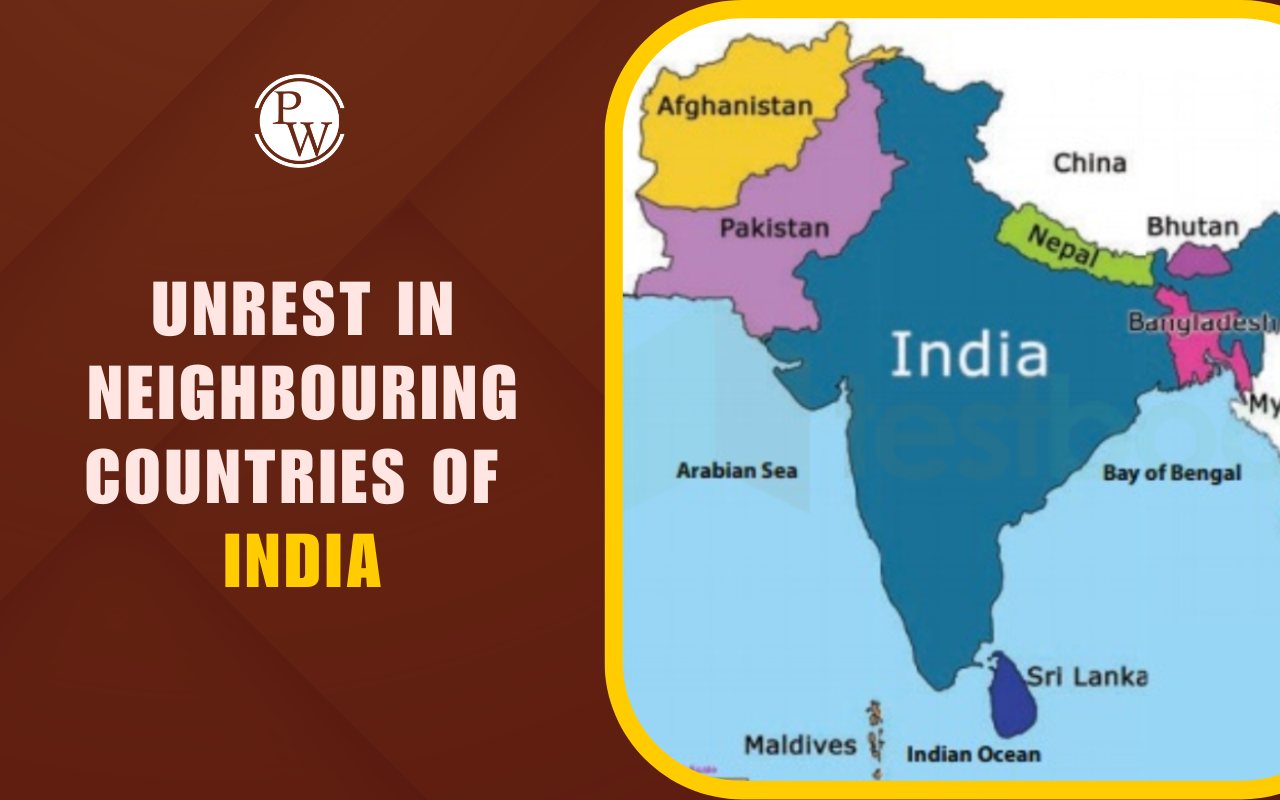
Unrest in Neighbouring Countries of India has been increasing over the past few years. There have been growing instances of political instability and unrest in countries such as Nepal, Bangladesh, Sri Lanka, and Pakistan, where the common masses have overthrown the sitting governments. Such events are impacting even India and its regional diplomacy in Southeast Asia.
The primary reasons behind the protests are attributed to weak governments, economic crises, corruption, lack of jobs, ethnic conflicts, and influence from global powers. Recently, Nepal has been witnessing Gen Z protests, which have led to the death of 19 protestors and the collapse of the democratic government there. When any such event occurs in India’s neighbouring countries, it directly impacts India as well. Refugees may cross borders, trade routes may be disturbed, and peace in the region can be threatened. Therefore, unrest in neighbouring countries of India has serious implications on India as well.
Unrest in Neighbouring Countries of India: List
Several neighbouring countries of India have faced political unrest in the last few years. Each of these countries is facing a similar kind of protest against the respective governments. Some are dealing with political upheaval, while others are struggling with unemployment or poor governance. The unrest in the neighbouring countries of India is summarized in the table provided below:
| Unrest in Neighbouring Countries of India list | |
| Countries | Details |
| Nepal | Gen Z Protests in September 2025 due to social media ban, widespread corruption, nepotism, and unemployment |
| Bangladesh | Student-led protests in Dhaka; violent clashes; internet shutdowns due to Authoritarian policies, corruption, and lack of democratic reforms |
| Sri Lanka | The country faced a huge financial crisis in 2022. People protested on the streets because of food shortages, lack of fuel, and rising debt. |
| Pakistan | Political fights, terrorism, and a weak economy have shaken the country. Civil-military tensions continue, and ordinary people struggle with rising prices. |
| Myanmar | The military coup in 2021 led to large-scale violence and displacement. Many people are still fighting for democracy. |
| Afghanistan | The Taliban took control in 2021 after the U.S. withdrawal, creating instability and fear among citizens. Women face restrictions, and poverty is rising. |
| Bhutan | Generally peaceful, but faces economic pressure due to reliance on India and climate challenges. |
| China | While stable as a nation, its aggressive border policies and authoritarian system often create regional tension. |
Unrest in India’s Neighbourhood and its Impact on India
India remains in proximity and shares delicate borders with all of its neighbouring countries. Any turmoil or political instability in any of these countries is bound to impact India in some way or another. The table provided below contains detailed information related to the causes behind the unrest in different neighbouring countries of India, major events, and their impact on India:
| Country | Causes behind Unrest | Major Events | Impact on India |
| Nepal | Social media ban, corruption, nepotism, and youth unemployment | Gen Z-led protests; Parliament and Supreme Court stormed; PM Oli resigns; ministers and 20+ opposition MPs resign; President’s residence attacked | Flight diversions; heightened border security; disruption to tourism and trade; travel advisories issued |
| Bangladesh | Authoritarian policies, corruption, and a lack of democratic reforms | Student-led protests in Dhaka; violent clashes; internet shutdowns; interim government formed | Border migration, trade slowdowns at Petrapole-Benapole, and increased resource pressure in West Bengal |
| Sri Lanka | Economic collapse, high inflation, shortages of food and fuel | Mass protests in Colombo; President Gotabaya Rajapaksa resigns; IMF bailout; ongoing price protests | Trade disruptions; refugee inflow to Tamil Nadu; southern India security concerns |
| Pakistan | Economic crisis, inflation, IMF negotiations, and political rivalry | Street protests by Imran Khan supporters; clashes with police; provincial instability; terrorism threats | LoC tensions; cross-border security threats; potential spillover into Jammu & Kashmir |
Instability in India’s Neighbourhood
Instability in India’s neighbourhood is related to protest movements, political instabilities, and coups. India looks to support its neighbouring countries through aid, loans, and infrastructure projects. However, challenges remain as most countries face several deep-rooted issues. The instability in India’s neighbourhood affects India in several ways, such as:
-
Security Concerns: Militancy in Pakistan or unrest in Myanmar can cross into Indian territory. This creates a risk for border states.
-
Refugee Problems: Conflicts in Sri Lanka and Myanmar have pushed people to enter India in search of safety. Managing refugees puts pressure on resources.
-
Economic Impact: When neighbours are unstable, trade routes are blocked. For example, Sri Lanka’s economic collapse affected India’s exports.
-
Diplomatic Challenges: India must balance relations with these countries while also facing the influence of China, the U.S., and other powers.
-
Cultural Links: Instability also disturbs cultural and family ties. Many communities across borders share history and traditions.
Nepal’s Political Instability: The Gen Z Protests
Protest Movements erupted across various regions of Nepal on September 8, 2025, in response to the banning of 26 different unregistered social media sites in Nepal. The ban on social media apps included the likes of Facebook, Instagram, etc. People taking part in the process are primarily the Generation Z Youth. Gen Z youth refers to those people who were born between 1996 and 2012.
-
The protests began as a peaceful demonstration against the government. But it soon turned violent with atleast 19 protesters reported dead and more than 400 injured.
-
The protestors even stormed the Nepal Parliament in Kathmandu and targeted the homes of the former Prime Ministers, politicians, etc.
-
Amidst the intensifying Gen Z protests, Prime Minister of Nepal, K.P. Sharma Oli, resigned due to the mounting pressure.
-
Through the mass protests, the Gen Z Youths of Nepal have expressed their anger against deep-rooted corruption in Nepal, extravagant lifestyles of the children of politicians, referring to them as ‘Nepo Kids’. It became the flashpoint of resentment on online platforms.
-
The Government’s decision to ban popular social media platforms in Nepal was seen as a tool to cut off Gen Z’s primary platform of expression and solidarity.
-
India is keeping a close eye on the turmoil in Nepal and is very much mindful of the sensitive political alignments of the country in the past.
Ready to boost your UPSC 2026 preparation? Join PW's UPSC online courses today!
Unrest in Neighbouring Countries of India: FAQs
Why is there unrest in India's neighbouring countries?
Which neighbouring countries of India are facing political instability?
How do protests in Nepal affect India?
Why did the Gen Z protests start in Nepal in September 2025?
Why are the Nepali youth angry at the government?












